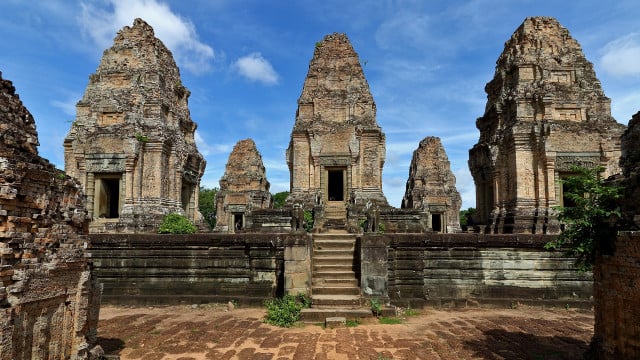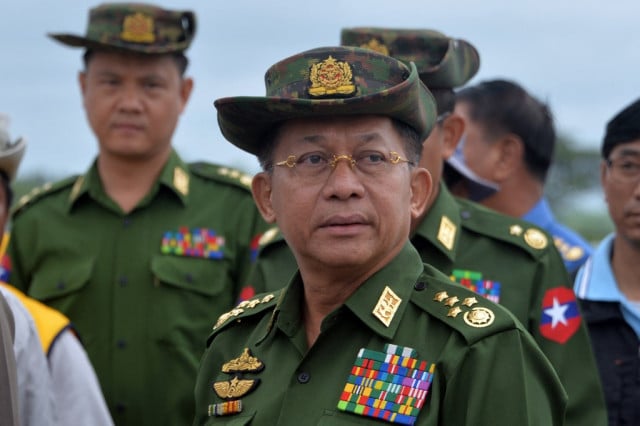East Mebon: a Beautiful Temple in the Middle of a Lake-size Water Reservoir

- By Long Ton
- May 22, 2022 8:19 PM
SIEM REAP–In the Angkor Archeological Park in Siem Reap Province, the East Mebon temple, which is known in Khmer as the Brasat Mebon Khang Kert, is a millennium-old monument that attracts a lot of visitors as part of the grand tourism circuit in the park. Constructed in the shape of a square on an area of one hectare, this temple was actually a Hindu monastery built during the reign of King Rajendravarman II around 952 and dedicated to his ancestral lineage.
Based on the documentation gathered by researchers, the East Mebon is dedicated to the Hindu deity Shiva symbolized by a lingam. This ancient temple was built on a small island surrounded by the East Baray—a vast body of water 2-kilometre wide and over 7-kilometer long that had been turned into reality through the vision of King Yasovarman as the 9th century had come to an end.
By comparing the elevation of the temple’s lower layer and the nearby rice fields along the East Baray, some researchers have estimated that, in the early years of the baray, the water level in this reservoir might have been 2 to 3.5 meters. Which meant that those going to the monastery had to use boats to reach it.
Seeing a temple in the middle of this vast water reservoir must have sparked observers’ curiosity. So, why did people build such a temple at that location hundreds of years ago? During the Angkor empire, which ruled this very land from the 9th up until the 15th century AD, the Khmer Hindu followers often stood firmly on the religious ideology of water and mountain in which these two crucial elements represent the ocean and, of course, the Kailash Mountain that is considered a sacred site by Hindus as well as Buddhists. Similar designs can be seen at Angkor as many other temples have moats dug around them. In this architectural mindset, the vast reservoir around East Mebon can be considered a large moat.
Built of bricks, limestones and laterite stones, the design of East Mebon is viewed as very intriguing. Beyond the five towers that were erected in a crisscross manner, long rectangular structures were constructed around the center structure along with secondary towers made of laterite stones and bricks. When climbing to the first level, one can see sculptures of elephants turned toward the four cardinal directions. According to some research reports, the brick portion of the temple was covered with mortar to achieve a smooth surface. On the wall, one can see holes in them. These holes are believed to have been made to enable the mortar to stick to one another more effectively.
Regarding the quality of the stones used to build the temple, which can be seen in the pillars, the false doors and the door frames, many researchers were amazed at how skillful these ancient architects and engineers were at choosing the best stones. Despite being centuries old and having been exposed to heat and rain for more than 1,000 years in addition to the multiple political events and social changes that took place at Angkor, the stones of this ancient structure remain relatively intact without much corrosion due to time and the elements. In fact, the stones seem to be new as if they had been freshly cut and shaped to build the monument.
Regarding the sculptures, they seem to be a bit bigger than usual at this particular temple. The sculpted scenes on the wall surface were done with remarkable depth into the wall surface. Their artistry does not fall too far short of that of the famous scenes at the temple of Banteay Srey whose construction also started during the reign of Rajendravarman II in the mid-900s. When looking at the design and the sculptures on the false doors and the lintels of the towers, regardless of their sizes, one can clearly see that every scene and detail has something truly unique that is different from one another.
Long Ton is a Cambodian with a passion for Angkor and that era. A university graduate who speaks several languages, he has conducted tours at Angkor.
Ky Chamna contributed to the story.














